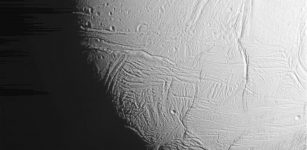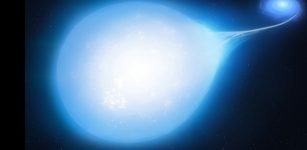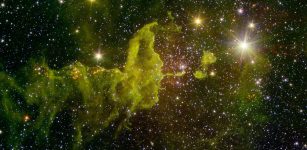Small, Hardy Planets Have Best Chance To Survive Death Of Their Stars
Eddie Gonzales Jr. – MessageToEagle.com – Small, hardy planets packed with dense elements have the best chance of avoiding being crushed and swallowed up when their host star dies, new research from the University of Warwick has found.
When a star dies, it crushes and swallows up everything in the vicinity, but small, dense rocky objects can survive.
An asteroid torn apart by the strong gravity of a white dwarf has formed a ring of dust particles and debris orbiting the Earth-sized burnt out stellar core. source
Astrophysicists have modeled the chances of different planets being destroyed by tidal forces when their host stars become white dwarfs.
They have determined the most significant factors that decide whether they avoid destruction.
In the future, our Sun will eventually run out of fuel and become white dwarfs. Could be Earth also among such survivors capable to avoid destruction?
By modelling the effects of a white dwarf’s change in gravity on orbiting rocky bodies, the researchers have determined the most likely factors that will cause a planet to move within the star’s ‘destruction radius’; the distance from the star where an object held together only by its own gravity will disintegrate due to tidal forces.
Within the destruction radius a disc of debris from destroyed planets will form.
Although a planet’s survival is dependent on many factors, the models reveal that the more massive the planet, the more likely that it will be destroyed through tidal interactions. Also low viscosity exo-Earths are easily swallowed even if they reside at separations within five times the distance between the center of the white dwarf and its destruction radius.
“Our study, while sophisticated in several respects, only treats homogenous rocky planets that are consistent in their structure throughout,”Dr Dimitri Veras, from the University of Warwick’s Department of Physics, said in a press release.
“A multi-layer planet, like Earth, would be significantly more complicated to calculate but we are investigating the feasibility of doing so too.”
Distance from the star, like the planet’s mass, has a robust correlation with survival or engulfment. There will always be a safe distance from the star and this safe distance depends on many parameters. In general, a rocky homogenous planet which resides at a location from the white dwarf which is beyond about one-third of the distance between Mercury and the Sun is guaranteed to avoid being swallowed from tidal forces.
“Our study prompts astronomers to look for rocky planets close to — but just outside of — the destruction radius of the white dwarf. So far observations have focused on this inner region, but our study demonstrates that rocky planets can survive tidal interactions with the white dwarf in a way which pushes the planets slightly outward,” Dr Veras said.
Written by Eddie Gonzales Jr. – MessageToEagle.com Staff Writer











